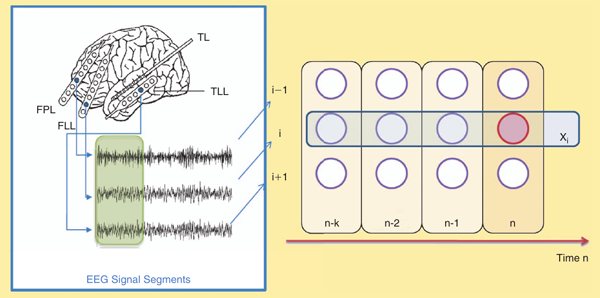The Seizure Prediction Problem in Epilepsy: Cellular Nonlinear Networks
By Ronald Tetzlaff and Vanessa Senger
NOTE: This is an overview of the entire article, which appeared in the Fourth Quarter 2012 issue of the IEEE Circuits and Systems Magazine.
Click here to read the entire article.
Author’s Abstract:
70 million people are affected by epilepsy which is the most common chronic neurological disorder worldwide. About 70% of patients can expect an effective seizure control with medication. The realization of an implantable device capable of detecting impending seizures, warning patients and rendering some kind of treatment would be of great benefit. In this contribution, a brief history of epilepsy and an introduction to terminology and symptoms are given followed by a short summary of current research going on in the field of seizure prediction. Afterwards, an introduction to Cellular Nonlinear Networks (CNN, a paradigm for high speed computation) is given and finally a presentation of 4 different CNN based approaches to epileptic seizure prediction will convey a vision of the methods possibly used one day on an implantable seizure warning device.
The article opens with stories of three persons suffering severe epileptic seizures, illustrating the extremely disruptive effects such seizures have on their lives. (In these 3 cases, the seizures are uncontrolled for the most part.) Epilepsy is a collective term for a brain disorder manifesting in recurrent seizures. These seizures are the result of excessive or synchronous neuronal activity in the brain. The article includes a description of a current method of classifying seizures.
Research since 1975 has been conducted on the development of a reliable method of predicting epileptic seizures. If patients could be warned of oncoming episodes, they might be able to reduce the associated injuries that frequently occur. Additionally, treatment might be developed to stop the seizure process.
The article describes work underway to predict seizures using Cellular Nonlinear Networks (CNN). Since CNN have been proposed in 1988, these networks have been developed into a paradigm for universal high-speed computation. Applications of CNN can be found in a wide range of interdisciplinary research including image and video processing, the realization of bio-inspired and nanoscale systems, and feature extraction in epilepsy.
While in these investigations CNN versions of existing feature extraction methods have been determined and analyzed in detail, a new data based identification by CNN has been proposed. Furthermore, promising results have been obtained by applying a multivariate nonlinear prediction of EEG signal.

Scheme of CNN based signal prediction. K = 3 values of 3 channels are used for the prediction of a signal value x^i(n) with values of channel xi(n) also used in the prediction.
The results discussed in the article were obtained using a data base of both long term and short term intracranial EEG recordings of more than 20 patients suffering from focal temporal lobe epilepsy. All of the recordings were acquired in presurgical diagnostics at the Clinic of Epileptology in Bonn.
The authors describe in detail the implementation of CNN that they have been pursuing, and the results they have achieved in the areas of feature extraction, pattern detection,and seizure prediction.
ABOUT THE AUTHORS
NOTE: More complete biographical information and photos of the authors is available in the article.
Ronald Tetzlaff is a Full Professor of Fundamentals of Electrical Engineering at the Technische Universität Dresden, Germany. His scientific interests include problems in the theory of signals and systems, stochastic processes, physical fluctuation phenomena, system modelling, system identification, Volterra systems, cellular nonlinear networks, and memristive systems.
Vanessa Senger received her Diploma of Physics Degree in 2009 from the Goethe University in Frankfurt, Germany, and is currently involved in her Ph.D. studies in electrical engineering at the Technische Universität Dresden, Germany. Her research interests include cellular nonlinear networks, memristive systems and nonlinear signal processing.






